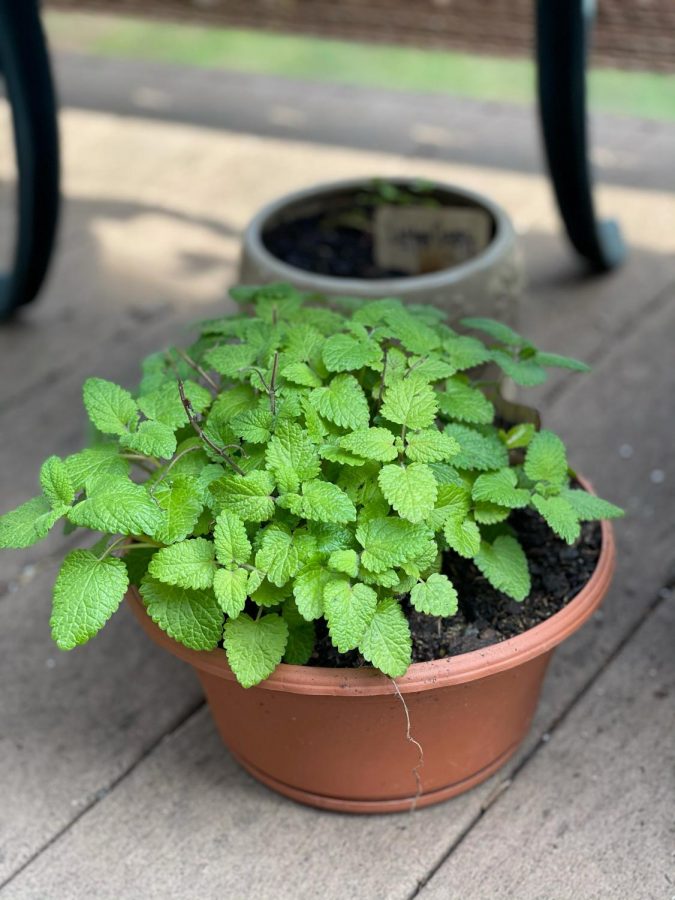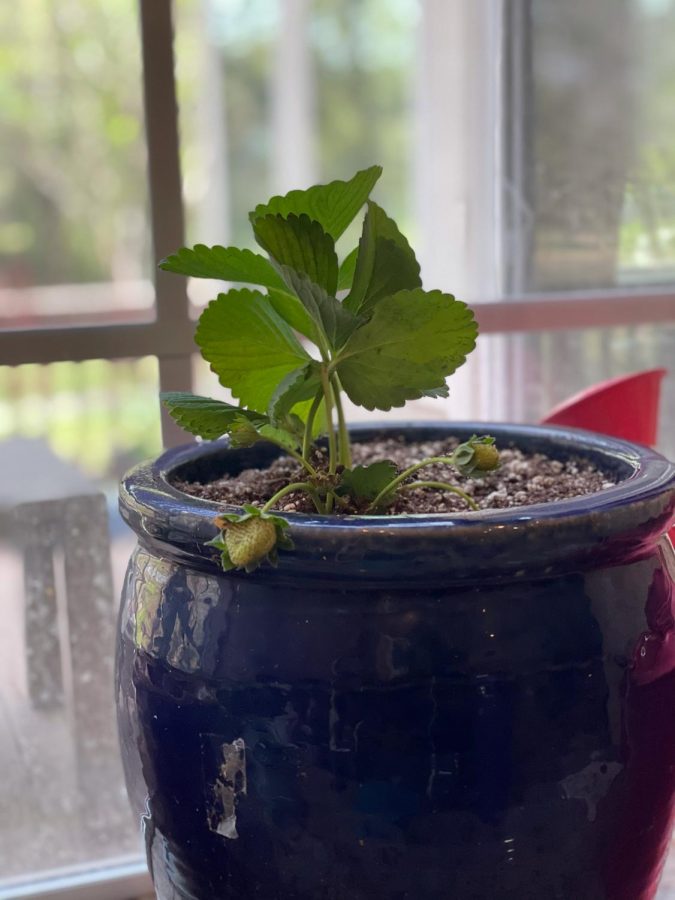Earth Day 2021: Ways to Reduce Your Carbon Footprint
In the spring of 1970, United States Senator Gaylord Nelson declared April 22nd Earth Day. At this point, there was no United States Agency dedicated to environmental protection, there was no Clean Air Act, and there was no Clean Water Act. In short, there were no legal or regulatory mechanisms to protect the environment. Earth Day was established as a way to force the issue of environmental protection onto the national agenda and give a voice to public consciousness about the state of our planet after decades of uncontrolled pollution.
Our changing planet is affected by each of its inhabitants. Every individual residing on the planet has a responsibility for the welfare of our Mother Earth. This Earth Day, we hope to focus on the reduction of our carbon footprint in order to collectively make a greener future. “Carbon Footprint” is defined as the amount of carbon dioxide and other compounds, including methane, nitrous oxide, and fluorinated gases, emitted due to the consumption of fossil fuels by a particular person. These compounds trap heat in the atmosphere and are a major cause of global warming. By focusing on the amount of fossil fuels we emit, each individual can aim to become increasingly fuel efficient and the world can collectively work towards the creation of a healthier planet and a healthier future.
Inside Your Home
 There are plenty of ways to reduce your carbon footprint without even leaving the house! Making the right decision for your household and using them effectively can be beneficial. First, the obvious ones: use less heat (a programmable or smart thermostat can help with this) and turn off the lights and other appliances when you aren’t using them.
There are plenty of ways to reduce your carbon footprint without even leaving the house! Making the right decision for your household and using them effectively can be beneficial. First, the obvious ones: use less heat (a programmable or smart thermostat can help with this) and turn off the lights and other appliances when you aren’t using them.
Next, for lights, using LED lights are overall more efficient than using incandescent lights. Making this switch can help your household consume roughly 85% less energy and the lights last up to 25 times longer and are cheaper. Overall, a switch to LED lights can help you save money and save the environment.
When buying products, search for the Energy Star. This is a government-backed symbol for energy efficient products. Energy Star can be found when searching for energy efficient lighting, electronics, water heaters, appliances, heaters, coolers, office equipment, and much more.
You can also save energy from improving the insulation of your home. Something can be as simple as planting shrubs and trees around your home. In addition, be conscious to search for energy-efficient products. Finally, simply insulate your home so you don’t have to waste energy heating your home.
Quick Steps:
- Don’t Waste Resources
- Turn off Lights/Appliances, Use Less Heat
- Use LED Lights
- Use Energy Star Products
- Insulate your Home
On Your Plate
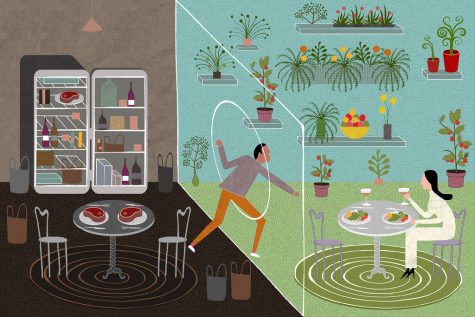 Another way to reduce is to simply eat less meat, particularly red meat. The process of producing meat, from feed to water to land usage, is what causes a huge carbon footprint. Experts suggest that a vegan diet is the best option for the environment, with close seconds being a vegetarian or pescetarian diet. However, your choice of food replacements is also important. For example, dairy products and deep sea fishing cause large emissions. Even the simple choice of eating chicken instead of beef and lamb is beneficial. Typically, the best choice is eating lower on the food chain.
Another way to reduce is to simply eat less meat, particularly red meat. The process of producing meat, from feed to water to land usage, is what causes a huge carbon footprint. Experts suggest that a vegan diet is the best option for the environment, with close seconds being a vegetarian or pescetarian diet. However, your choice of food replacements is also important. For example, dairy products and deep sea fishing cause large emissions. Even the simple choice of eating chicken instead of beef and lamb is beneficial. Typically, the best choice is eating lower on the food chain.
While what you eat is important, where the foods you eat are from is also important. Typically, eating local foods have less of a carbon footprint since there’s less transportation required. However, given the choice between local meat and imported vegetables, choose the imported vegetables! One vegetarian meal is equivalent to saving 1,160 miles of driving.
Next, a critical step is to waste less food. It’s estimated that Americans waste about 40% of the food they buy. To reduce waste, simply being aware can work wonders. For example, be wary of bulk buying and plan your meals each week! Be aware of what’s in your fridge and be creative with leftovers. To extend the life of some of your foods, learn how to freeze them properly.
Finally, part of reducing your carbon footprint on your plate is to simply change your plate! If you use disposable plates, switch to dinnerware. And if you must use disposable plates, search for compostable and biodegradable options!
Quick Steps:
- Eat Lower in the Food Chain
- Eat Less Meat or Pick White Meats over Red Meats
- Eat Local Foods
- Be Aware of Wasted Food
- Use Dinnerware instead of Disposable Plates
Outside Your Home
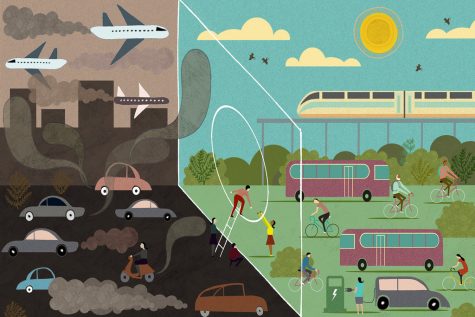 In addition to changing your habits inside the home, there are various ways outside the home through which you can reduce your carbon footprint. In 2017, carbon dioxide emissions from transportation surpassed emissions from electricity generation as the leading source of greenhouse gas emissions. It is estimated that going without a car for a year could save about 2.6 tons of carbon dioxide. Realistically, this is not possible. However, there are ways to reduce your carbon footprint even while driving. Constant acceleration and braking is less carbon efficient than driving at a consistent speed. So, when driving, make sure to go easy on the gas and brakes. In addition to regularly servicing your car, checking your car’s tires is a way to keep your car more fuel efficient as low tire pressure will hurt your car’s fuel economy. Blasting the air conditioning or heater in your car causes carbon emissions to increase, so reducing your usage can also reduce your carbon footprint. The heavier your car, the more fuel it emits, so not weighing your car down with extra items can help the environment around you. And of course, carpool with others when possible! Another possibility to reduce your carbon footprint is to fly less. However, sometimes this is not realistic either. Instead, you can make up for the emissions by donating money to sustainable projects. Many times the airlines will give you this option, or you can use a third-party like Atmosfair or Terrapass.
In addition to changing your habits inside the home, there are various ways outside the home through which you can reduce your carbon footprint. In 2017, carbon dioxide emissions from transportation surpassed emissions from electricity generation as the leading source of greenhouse gas emissions. It is estimated that going without a car for a year could save about 2.6 tons of carbon dioxide. Realistically, this is not possible. However, there are ways to reduce your carbon footprint even while driving. Constant acceleration and braking is less carbon efficient than driving at a consistent speed. So, when driving, make sure to go easy on the gas and brakes. In addition to regularly servicing your car, checking your car’s tires is a way to keep your car more fuel efficient as low tire pressure will hurt your car’s fuel economy. Blasting the air conditioning or heater in your car causes carbon emissions to increase, so reducing your usage can also reduce your carbon footprint. The heavier your car, the more fuel it emits, so not weighing your car down with extra items can help the environment around you. And of course, carpool with others when possible! Another possibility to reduce your carbon footprint is to fly less. However, sometimes this is not realistic either. Instead, you can make up for the emissions by donating money to sustainable projects. Many times the airlines will give you this option, or you can use a third-party like Atmosfair or Terrapass.
Shreya On Eating Vegetarian For A Week
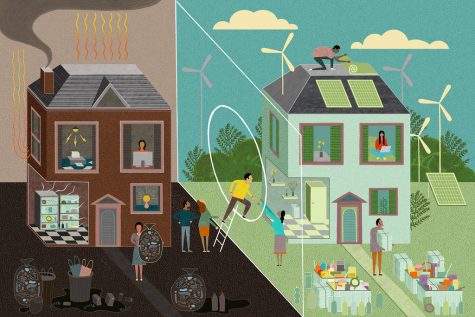 So, yes, for a week, I tried to go vegetarian and minimise my food waste. (I also started using more natural light during school instead of turning on my light.) Overally, it wasn’t that bad for me. The only meat I eat frequently is chicken (and maybe fish), both of which are on the lower side of the carbon footprint spectrum. Honestly, I just sort of consumed a bunch of carbs, fruits, and vegetables for my meals. I did have dairy products (like cheese), which had a considerable footprint, but I wasn’t ready to go full-on vegan. I also toyed with the question of whether eggs are considered vegetarian or not. (Siona told me they aren’t, so I did have some eggs.) I made sure to not waste so much food, which was just a matter of finishing what was on my plate. Usually I do that, so that was good.
So, yes, for a week, I tried to go vegetarian and minimise my food waste. (I also started using more natural light during school instead of turning on my light.) Overally, it wasn’t that bad for me. The only meat I eat frequently is chicken (and maybe fish), both of which are on the lower side of the carbon footprint spectrum. Honestly, I just sort of consumed a bunch of carbs, fruits, and vegetables for my meals. I did have dairy products (like cheese), which had a considerable footprint, but I wasn’t ready to go full-on vegan. I also toyed with the question of whether eggs are considered vegetarian or not. (Siona told me they aren’t, so I did have some eggs.) I made sure to not waste so much food, which was just a matter of finishing what was on my plate. Usually I do that, so that was good.
Will I remain vegetarian? For now, no. There are too many good foods with chicken in it. And, by not eating red meats (like lamb and beef), I can keep up reducing my footprint.
Siona On Growing a Garden
In addition to eating a meat-free and primarily dairy-free diet, I have been growing a garden to reduce my carbon footprint! About 28.5% of the carbon emissions from food production stems from the transportation of this food. By growing as much food as you can in your backyard or on your patio, you are significantly cutting down carbon emissions. In addition, the carbon dioxide plants consume and the oxygen plants release help to reduce the amount of carbon dioxide within our atmosphere. Below, I have attached photos of the plants growing in my kitchen and backyard patio in the hopes that this attempt at a garden will help me to reduce my carbon footprint!
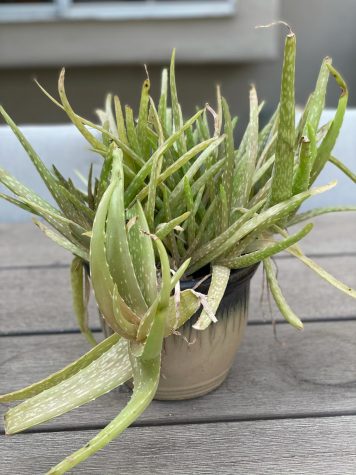 Here is a picture of Aloe Vera! This is technically not my plant, my mom’s been growing this plant for a long time! It is a very hardy plant, it even lasted the snow freeze.
Here is a picture of Aloe Vera! This is technically not my plant, my mom’s been growing this plant for a long time! It is a very hardy plant, it even lasted the snow freeze.
Above are all the herbs! From left to right is lemon grass, parsley, mint, and garlic chives. Herbs are relatively easy to grow and they are used quite often in cooking, which makes them a staple in any garden!
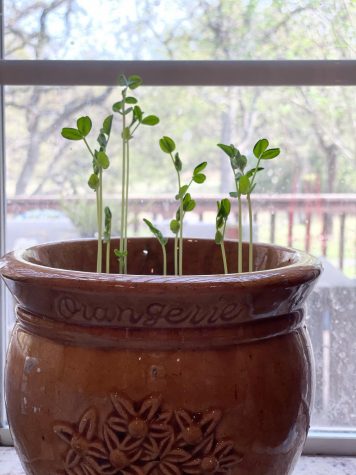 Here is a picture of sugar pea pods I just started growing. They are a little over a week old, so they will grow to be much larger!
Here is a picture of sugar pea pods I just started growing. They are a little over a week old, so they will grow to be much larger!
 Here is a picture of my chili pepper plant. When it grows larger, I will need to find a trellis to support the plant! My tomato plants below, however, already have beautiful red trellises for when they grow larger.
Here is a picture of my chili pepper plant. When it grows larger, I will need to find a trellis to support the plant! My tomato plants below, however, already have beautiful red trellises for when they grow larger.
Here are my two tomato plants — heirloom tomatoes and cherry tomatoes! Last spring, little bugs ate through the leaves of my tomato plants. This year, however, I learned from my mistakes and have been spraying neem oil on the leaves once a week.
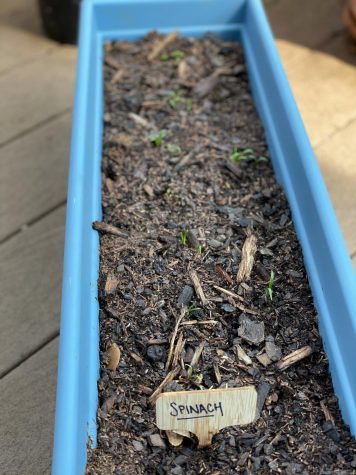 You can barely see, but the spinach I planted last week is just starting to poke out! I am looking forward to when it starts to grow
You can barely see, but the spinach I planted last week is just starting to poke out! I am looking forward to when it starts to grow
even more!
Here are my two strawberry plants! One is indoor and one is outdoor because last spring, my strawberry plants grew beautiful red, juicy strawberries. The only problem: the squirrels ate the strawberries before me! This year, one strawberry plant is inside to prevent that dilemma. The other is outside, but with a squirrel cage around it (taken off for the photo) to prevent the pesky squirrels from eating my strawberries again!

Siona Manocha, a senior, has attended Keystone School since kindergarten. Through The Keynote, Siona employs the use of visual art and media to highlight...

Shreya Chaudhary is a senior planning to major in data science or computer science. She interns with TigerGraph, promotes and tutors women in STEM through...


